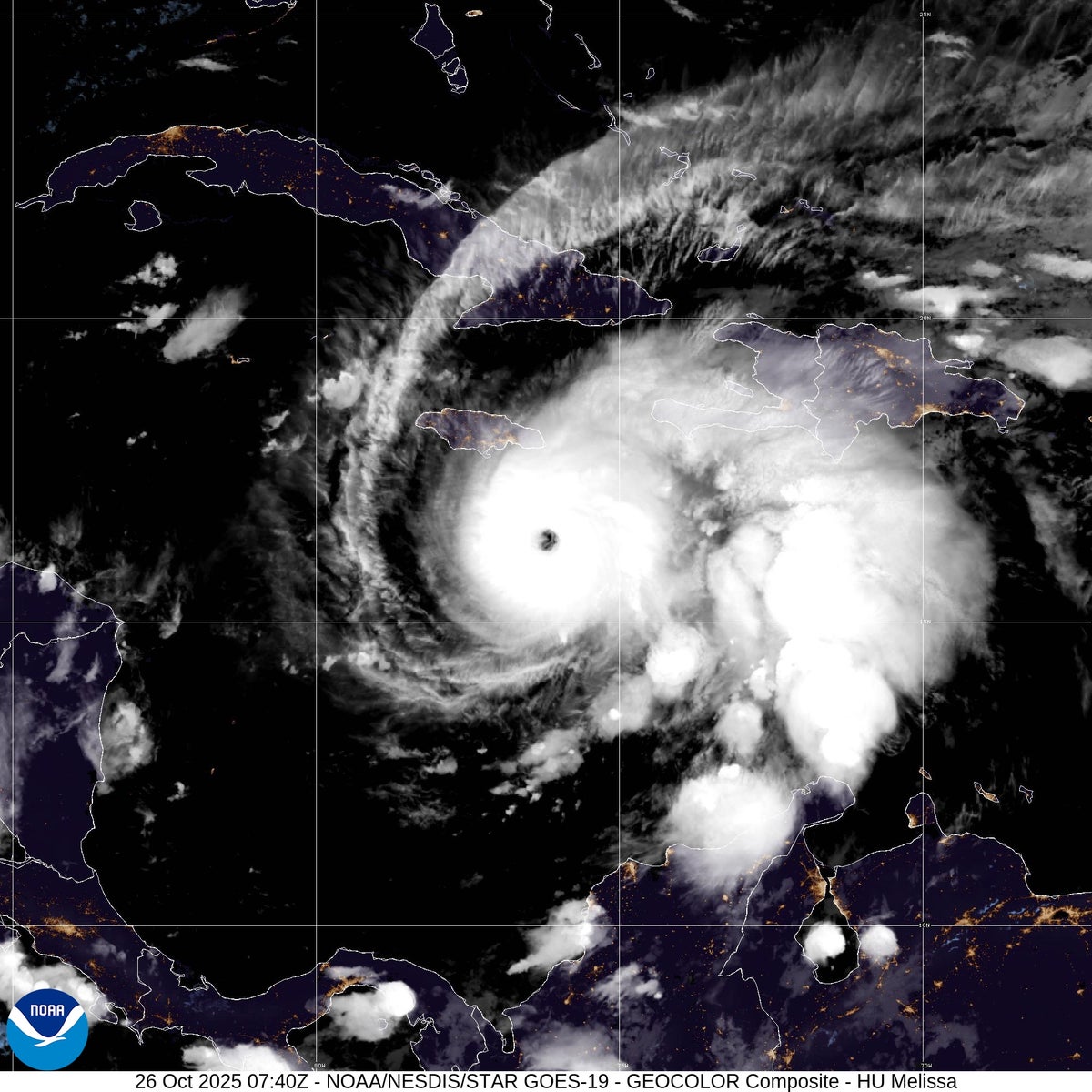On the weekend of October 25-26, 2025, Hurricane Melissa rapidly intensified into a powerful Category 4 major hurricane, posing a severe threat to Jamaica and parts of Haiti. This slow-moving storm is expected to bring catastrophic rainfall to the Caribbean islands, with some areas potentially receiving up to 40 inches of rain over a few days. Such an immense volume of water—equivalent to nearly half the area of a football field covered by an Olympic swimming pool—raises grave concerns for widespread flooding, landslides, and other life-threatening impacts.
While the dangers of hurricane-force winds and storm surge are widely recognized, the heavy rainfall associated with hurricanes is often an underestimated hazard. History underscores this risk: Hurricane Harvey in 2017 set the continental U.S. record for rainfall from a single storm, dumping over 48 inches near Houston and causing devastating floods. Similarly, last year’s Hurricane Helene brought severe flooding to the Appalachian region, with up to two feet of rain recorded, compounding earlier precipitation. These events highlight how rainfall-driven flooding can be among the deadliest outcomes of tropical cyclones.
By early morning on October 26, 2025, Melissa was undergoing extreme rapid intensification, with sustained winds reaching 140 miles per hour according to the National Hurricane Center (NHC), part of the National Oceanic and Atmospheric Administration (NOAA). Despite ongoing federal government shutdowns lasting three weeks, the NHC continued operations to monitor the storm. Meteorologists warned that Melissa might strengthen further, potentially reaching Category 5 intensity, before fluctuating in strength while moving through the Caribbean. The hurricane is forecast to turn northward early the following week, impacting Jamaica first and then Cuba by midweek, with eventual movement out into the Atlantic Ocean. At present, it appears unlikely that the storm will affect the U.S. mainland directly.
One of the most concerning features of Hurricane Melissa is its slow forward speed. The storm’s eye is moving at roughly five miles per hour, essentially crawling through the region. This sluggish pace dramatically increases the threat level because the affected areas will be exposed to hurricane conditions—high winds, heavy rain, storm surge—for extended periods. Brian McNoldy, a hurricane researcher at the University of Miami, emphasized this danger, stating that a slow-moving hurricane is far more devastating than one that passes quickly. The prolonged exposure heightens risks of flooding, infrastructure damage, and loss of life.
The National Hurricane Center’s rainfall forecasts for Melissa are alarming. Jamaica and southern Hispaniola (the island shared by Haiti and the Dominican Republic) are expected to receive between 15 and 30 inches of rain, with some parts of Jamaica facing up to 40 inches. Cuba could see up to 20 inches. Alongside the rainfall threat, life-threatening storm surge is increasingly likely on Jamaica’s coasts, with peak water levels predicted to rise 9 to 13 feet above ground level, compounding the risk of flooding and coastal damage.
Scientists note that the intensification of rainfall events from tropical storms is linked to global warming. As atmospheric temperatures rise, the air can hold more moisture, leading to heavier precipitation when storms make landfall. McNoldy explained that this increase in moisture content is a clear fingerprint of climate change on hurricanes, resulting in more rain overall. This trend raises concern that storms like Melissa may become more frequent and destructive in the future.
The topography of the Caribbean islands further amplifies the threat posed by Hurricane Melissa. Jamaica and Hispaniola are characterized by mountainous terrain, which is particularly vulnerable to flash floods and landslides caused by intense rainfall. When massive amounts of water accumulate in steep landscapes, the water naturally funnels downhill toward valleys and low-lying areas, increasing the likelihood of rapid, destructive flooding. Furthermore, the mountainous terrain can enhance rainfall itself through a process called orographic lift, where moist air masses are forced upward by the mountains, causing them to release more precipitation. This effect contributed to severe flooding in Appalachia during Hurricane Helene last year, and a similar scenario is feared for the Caribbean islands under Melissa’s influence.
The combination of heavy rainfall, slow storm movement, and mountainous terrain creates a perilous situation. McNoldy warned that once rain totals exceed even half a foot, the amount of water becomes “ridiculous,” overwhelming natural and human-made drainage systems. Rainfall surpassing 12 inches is virtually unmanageable regardless of infrastructure quality, making Melissa’s forecasted precipitation

